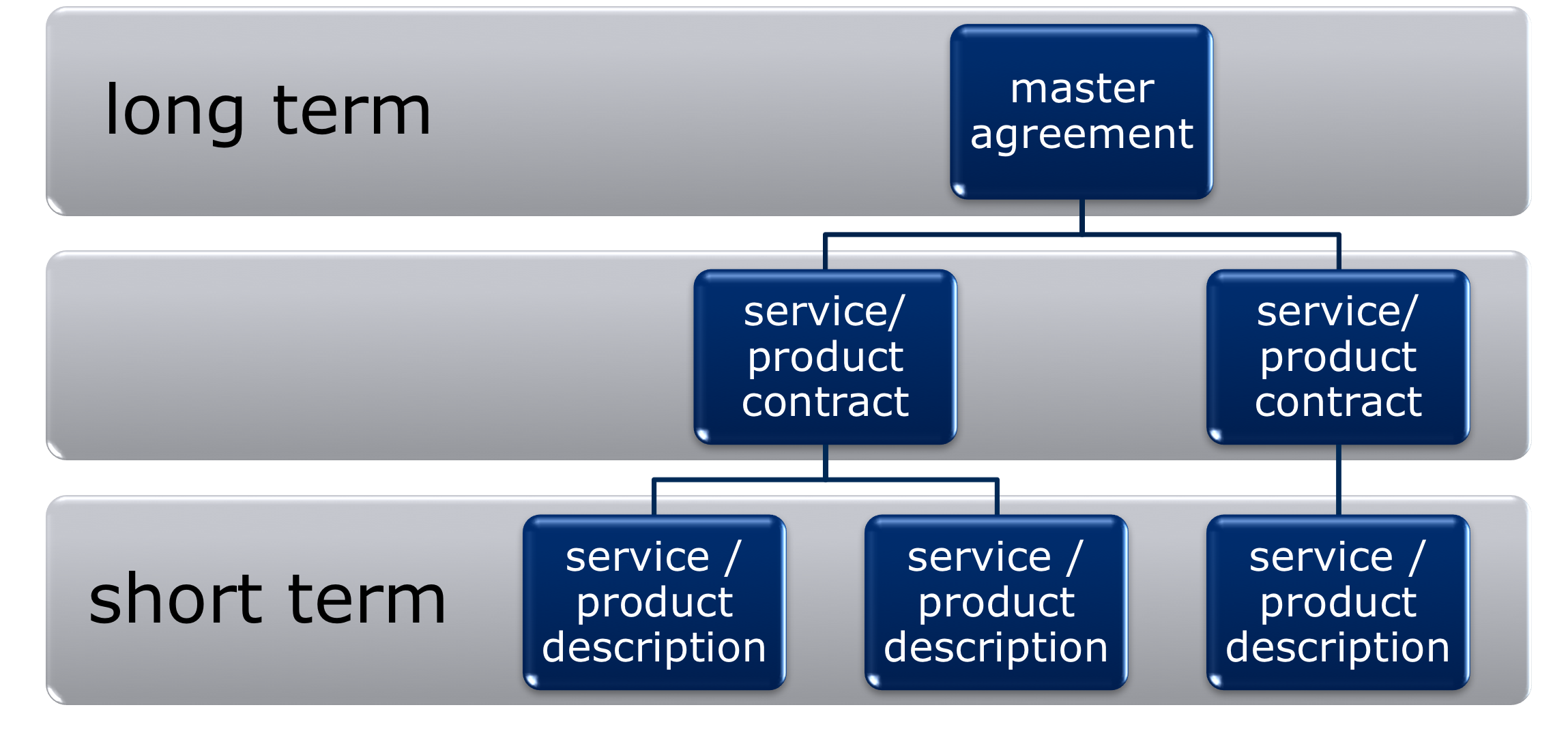Are you still using expensive contract structures in the IT sector?

Structuring contracts can be a very difficult task. Combine that with services in volatile environments and asynchronous information distribution, the overall value of this task can decrease at best and provide legal traps at worst. Immerse yourself in some newer concepts, that I came across working on a project.
This article is mainly aimed at entrepreneurs, who have to deal heavily with lawyers and contracts. It should broaden your understanding of contracting in a more professional manner.
Disclaimer: Those concepts do work well in Austrian and German Law. I don't know how they fit in other legislation, but rest assure: The concept itself is not bound to the legal sector.
📄 Table of contents
>"I'm trusting in the Lord and a good lawyer." - Oliver North
Current situation and 90% of all contracts
As I have seen most of the contracts are written poorly, because not enough time is spend writing them. Always make sure to stay on the right side of the track and cover it with contracts!
A main distinction has to be made between whether a product or a service is owed under the contract. Each one has different consequences for the contract parties. Now the problem that arises in the IT sector, is that you cannot always determine the product or service at the beginning of the cooperation.

Most of the current solutions are single documents that describe the service or product as accurate as possible. Payments are stipulated on these terms.
Changes in conditions or the environment forces the contracting parties to re-evaluate the terms, set up a new contract and reconcile completed payments and transactions. This is very time consuming and costs a lot. What might be remunerative for the lawyer, isn't really cost-efficient for the entrepreneur.
Better approach
To minimize costs and increase overall consulting value from your lawyers try this way:

On top of all other documents and contracts you have a master agreement, that determines the cooperation conditions. This contract should act as a framework.
Underneath are the individual service or product contracts. Those describe bigger projects and should not only contain a basic service description, but also arrangements for (service-) management, data privacy and documentation requirements.
The last tier are separate documents containing a very detailed description of the product or service.
Possibilities
This concept follows the idea of modularization, which is already established in the programming world.
When writing code and trying to keep it as small and sufficient as possible, incredible positive scaling effects can be achieved.
It's not different with contracts. This structure allows to keep the relationship between the parties clear and organized, but also extremely flexible.
Creating single ("sub") contracts under a master agreement, results in a bigger initial setup but enables the contract parties to add, adapt or remove parts of their cooperation without the necessity to change other areas.
The real power of this structure will be visible in long-term relationships and big cooperation projects. After more than 10 years of work with a dozen projects, the legal effort for stipulating new projects will be a breeze for both parties and money spent on lawyers will be very concise and effective.
Conclusion
Combining powerful concepts from different areas often result in exponential results. The same applies in Law and Tech. Unifying the stability of jurisdiction with the innovation of programming allows to stay on top of fast developing world.
If you gained something from this article let me know with a comment or heart. Make sure to follow for more :)